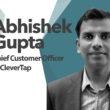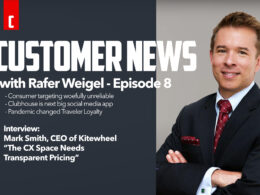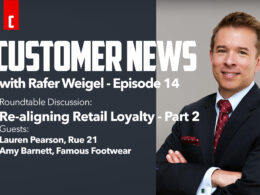Data is vital is to any organization. But it’s not all the same. From first-party data to third-party cookies, quantitative to qualitative, and basic demographics to more detailed customer preferences – data can vary in almost every way possible. But now, there’s a new type of data in town. One that overarches above the rest and could prove the most valuable type of data going forward. We’re talking about consented data.
by Linda Vetter
What is consented data?
As the name suggests, a broad definition of consented data is that it’s collected with consent from the data owner. Technically, this could apply to a vast array of data. Since the European GDPR legislation came into force in 2018, for example, websites have to ask for a user’s ‘consent’ to collect and use third-party cookies.
In this case, consent is sought to tick a box. It’s not always done in the clearest way either. While GDPR suggests that sites shouldn’t make it difficult to opt out, many have a stark contrast between the winding avenues for opting out and pleasant blue or green button for consenting.
The same can also be applied to first-party data for most organizations. Because it’s collected directly from consumers, you might assume it’s classed as consented data. Think again. First-party data covers a whole range of information that many customers aren’t really aware of like purchase history, website activity, and account information.
In simple terms, these currently predominant forms of data aren’t really consented. They’re collected in ways that are pretty underhand. On the flipside, consented data is data that’s consented by design. Consent isn’t an afterthought to cover your back; it’s the first thought in a comprehensive data strategy, which shapes how data is collected, protected, and used from the get-go.
The value of consent
Defining a type of data solely by consent might seem a little over the top. However, when you see how concerned consumers are about data consent, you’ll no doubt change your mind.
A whopping 90% of global online users have at least one significant concern about data privacy. While cybercrime (data breaches) tops the list, 40% of people are worried their information will be sold to third parties and used in decision-making processes without their consent. And 31% said they’re concerned they don’t know what companies will do with their data in the future.
Why does this matter? It damages the trust between brands and consumers and affects the amount of data consumers are willing to share.
In a survey by KPMG, 86% of respondents said data privacy is a growing concern and 78% said they were uneasy about the amount of data being collected. In the same survey:
- 30% said they wouldn’t share their data with a business under any circumstances
- 17% said they would share data to help companies improve their products and services
- 12% said they would do it to make ads more relevant
Earning consented data
We’ve established what sets consented data apart, and why it’s so important. But how do you actually go about collecting it? The first pre-requisite is trust.
To fully consent to data being collected, stored, and used in specific ways, customers have to trust that you’ll do as you say. While a large proportion of respondents in the KPMG survey were mostly against sharing data, 40% said they would share it if they knew who would be using it and how it would be used. That’s a significant increase just by adding the smallest bit of transparency when collecting data.
That’s backed by a 2020 Edelman report, revealing that 60% of people with high trust in a brand are comfortable sharing personal information with them. Of course, that trust doesn’t come overnight. According to the report, consumers want brands to be dependable in what they offer, provide reliable information and take action to solve problems – both customers’ and society’s.
Pairing trust with value
The second ingredient to acquiring consented data is value. Even if customers trust you like they trust their friends, they still understand that their data is valuable. Sure, you can have it – but what are they getting in return?
In some cases, consented data can be submitted without that value for customers. Per Forrester, this is known as zero-party data, which is self-contained information that customers want to submit to brands.
However, to gain the best consented data, organizations need to create a value exchange with their customers. To sum it up, the more you put in, the more you get out. The result is known as earned data. It has a much broader scope than its zero-party counterpart, coming from two-way interactions.
Best of all, earned data is always on. Every piece of consented data feeds back into the two-way relationship. The customer journey is continually adapted with each engagement, delivering more value to customers, garnering more trust and earning even more consented data over time.
How to get started
If you want to earn valuable consented data, the best advice is to avoid diving in head-first. Trust and value are both critical factors; but it doesn’t take long for trust to be diminished and value to be removed.
Work with an audience engagement provider that creates bespoke gamification solutions to develop a rewarding two-way relationship with your customers. By delivering value from the word ‘go’, you can keep customers engaged and interested, giving you a better chance to build trust (and earn data) along the way.
As well as guiding your organization, consented data can be put back into that relationship to continually build trust, loyalty and advocacy.
Linda Vetter is SVP, Marketing at 3radical.
Photo by Philipp Wüthrich on Unsplash













